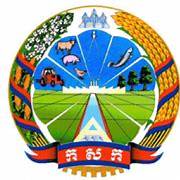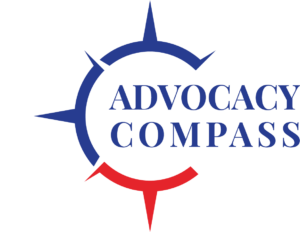Issue Description
Animal epidemics are significant because they can have a major impact on human health, the economy, and the environment. They can spread to humans, causing zoonotic (animal-to-human transmission) diseases, the most infamous recent example of which has been the COVID-19 pandemic. They can also damage crops and livestock, leading to food shortages and economic losses. In addition, animal epidemics can disrupt ecosystems and contribute to climate change.
One of the key diseases affecting domestic poultry (chicken and duck) stocks and wild birds in Cambodia is Highly Pathogenic Avian Influenza (HPAI), a highly contagious disease caused by Influenza A viruses. Some subtypes, including certain clades of H5N1, are considered endemic in Cambodia’s poultry, but there have been multiple subtypes affecting stocks to date. HPAI H5N1 clade 2.3.2.1c is one such clade found in circulation that is affecting both wild birds and poultry/ducks in Cambodia. Globally, the more recently emerged clade 2.3.4.4b has infected and killed an unprecedented diversity of wild birds (affecting 320 species) compared to previous lineages, causing devastation of domestic bird stocks and hundreds of mammal mortalities since 2021.
Since 2021, fourteen human cases of influenza A(H5N1) have been reported worldwide by the World Health Organisation (WHO) as of May 31, 2023. There is no evidence of human-to-human transmission from these cases. There have, however, been two confirmed human cases of H5N1 (clade 2.3.2.1c) in Cambodia this year, resulting in the death of one child in February 2023.
The ongoing outbreaks of H5N1 2.3.4.4b have affected millions of chickens, with more than 58 million domestic poultry infected or culled in the United States alone, and globally, have resulted in “the death and destruction of more than half a billion poultry.” Wild birds are vulnerable (68,013 wild bird casualties reported), as are mammals, including dolphins and seals (289 mammalian cases reported). The factors that can contribute to the spread of avian influenza virus include international trade, farming and sale (live bird markets), wild birds, and migratory routes.
Other diseases of concern include Newcastle Disease (avian paramyxovirus type 1), and around 20 other reportable bird pathogens.
Impact on business
The current risks in Cambodia associated with the spread of highly pathogenic avian influenza (HPAI) include potential hazards to human health, agricultural livelihoods, and the wider economy.
Zoonotic diseases are a significant threat to human health. They can cause serious illness, disability, and death. They can be spread through contact with infected animals, their bodily fluids, or their products.
Regarding agricultural livelihoods, farmers generally do not receive compensation if their stocks are lost to diseases. Governments in some countries will provide financial compensation to farmers who are required to euthanise their flocks due to HPAI; this does not occur in Cambodia. Global statistics estimate that farmers might experience a high level of mortality in their flocks, with rates often around 50%.
On the wider economic scale, detrimental impacts include potential trade bans from neighbouring countries as reactive measures to disease outbreaks. For example, Laos recently implemented a pork ban on imports from Thailand and Vietnam in response to rising cases of African Swine Fever in the region. The most recent global HPAI event has now affected more countries across the world than ever before with an unprecedented geographic scale and rate of spread, and this may influence changes in how and when trade bans are imposed.
On a side note, there is the added risk of small-scale farmers often not reporting unusual morbidity/mortality events in their poultry for several reasons, including the belief these events are due to weather, a lack of incentive to report, uncertainty with how to report, and others. This underreporting translates into limited animal health surveillance. Thus, the actual scale of the impacts is largely unknown, and warrants extreme caution.
Recommendation
- Enhance disease prevention measures among Cambodian poultry, livestock and the wider avian population.
We respectfully recommend that the Ministry of Agriculture, Forestry and Fisheries (MAFF) consider taking the following actions:
- Scaling up the resources needed for data collection, reporting, and surveillance, with particular attention at the district and provincial levels. This includes surveillance and reporting of mortality events for both wildfowl and poultry. Timely reporting and response to waterbird mortality events, with the use of mobile data collection tools, are crucial for early detection and reporting of events involving sick and dead wildlife, facilitating an efficient response;
- Ensuring adequate laboratory capacity at government facilities to test for HPAI. This would include a system of communication to ensure that laboratory findings are distributed promptly to ensure a rapid response where needed, given the speed of the disease transfer;
- Reducing the interface between livestock, poultry and wild birds. This may include poultry-husbandry changes which would prevent the release of duck or chicken stocks into wetlands and areas with populations of wild birds. Establishing more robust physical and natural barriers to pathogen transmission between domestic and wild birds reduces transmission risk for a range of diseases. Further, protecti on of wetland integrity and the associated separation of poultry operations from wildlife habitat has been found to lower the risk of HPAI outbreaks. There is a risk that the pathogen can spill over and spill back between domestic and wild animals at this interface, which can result in the reassortment of the virus, potentially mutating into a more lethal strain;
- Assessing the applicability of vaccinations. Vaccination can be an effective tool for preventing the spread of HPAI, but it is important to assess the applicability of vaccination in Cambodia, taking into account factors such as the cost of vaccination, the availability of vaccines, and the potential for vaccine resistance.
We believe that these actions would help to mitigate the risks posed by HPAI in Cambodia and would help to protect the country’s poultry industry and its people.
Royal government of Cambodia
Initiative from Eurocham: The issue has been raised by Agribusiness Committee within The White Book edition 2024 in the Recommendation No. 18.
On March 15th, 2024, EuroCham sent a letter to the Ministry of Agriculture, Forestry and Fisheries to request a meeting to discuss in detail the issues raised by the Agribusiness committee in the last edition of the White Book, notably on Reportable Diseases on Livestock. You can find the letter here.

[Ministry of Agriculture, Forestry and Fisheries] During the meeting with Secretary of State H.E. Mr. Prak David on 26th June 2024, he said that MAFF got reports from farmers, but the concern is that somehow farmers do not want to report the case due to the fear of killing animals without compensation.
National Counterparts

Ministry of Agriculture, Forestry and Fisheries

